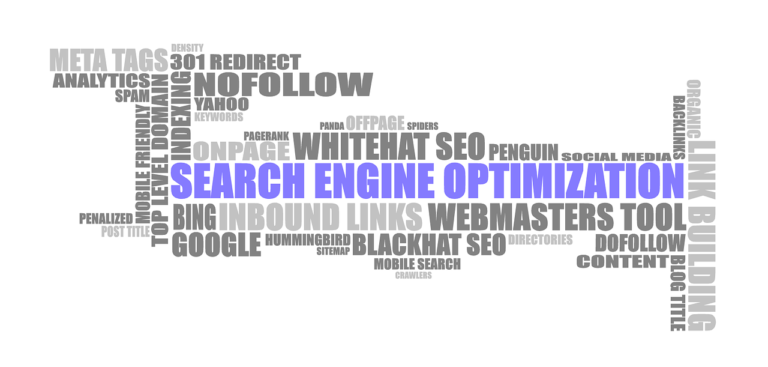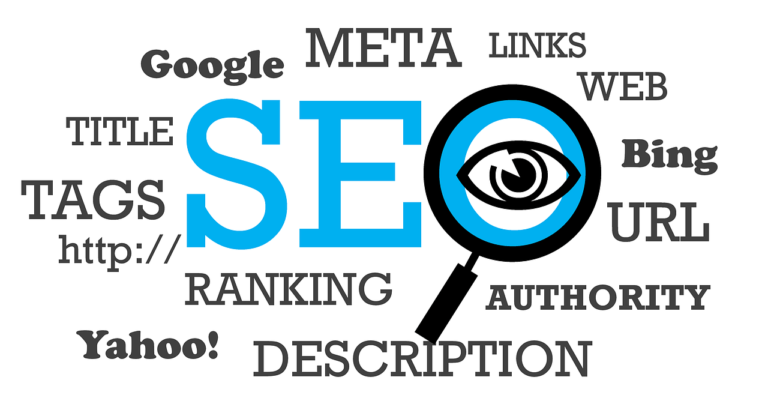What Is Anchor Text?
Have you ever clicked on a hyperlink within a webpage and wondered what the highlighted words meant? Those highlighted words are often referred to as anchor text. Anchor text is the visible, clickable text in a hyperlink that directs you to another webpage. It serves as a brief description or a hint about the destination of the link. Understanding anchor text is crucial as it plays an important role in search engine optimization and user experience. In this article, we will explore the concept of anchor text, its types, and its significance in the online world. So, let’s unravel the mystery behind anchor text and discover its impact on your browsing experience!

Learn moreabout how to build links for your business..
Definition of Anchor Text
Explanation of Anchor Text
Anchor text refers to the visible, clickable text within a hyperlink. It is the text that appears highlighted or underlined and is typically blue in color. When you click on anchor text, it takes you to another web page or a specific section within the same page. Anchor text plays a crucial role in providing context and relevance to both users and search engines, making it an essential element of SEO (Search Engine Optimization) strategies.
Importance of Anchor Text
Anchor text serves as a way to describe the linked content to both users and search engines. It provides valuable information about the linked page’s content and helps search engines understand the topic and relevance of the destination page. Additionally, anchor text plays a vital role in determining the ranking and visibility of a webpage in search engine results pages (SERPs). By optimizing anchor text effectively, you can improve your website’s visibility, drive more organic traffic, and enhance your overall SEO efforts.
Role of Anchor Text in SEO
In SEO, anchor text holds significant importance due to its impact on search engine rankings. When search engines crawl a webpage, they consider anchor text as one of the factors to determine the relevance and significance of the linked page. Well-optimized anchor text helps search engines understand the context and relevance of the content, making it more likely to rank higher in search results. Consequently, incorporating relevant anchor text in your website’s internal and external links can greatly enhance your website’s visibility and improve its overall SEO performance.
Types of Anchor Text
Exact-match Anchor Text
Exact-match anchor text contains the exact keyword or phrase that represents the linked page’s content. For example, if you are linking to a webpage about “dog training,” the anchor text would be “dog training” itself. While exact-match anchor text can be effective for SEO, it is essential to use it judiciously and maintain a balance to avoid keyword stuffing and potential penalties from search engines.
Partial-match Anchor Text
Partial-match anchor text refers to anchor text that includes a variation or partial match of the target keyword. Rather than using the precise keyword, it incorporates related terms or phrases. This type of anchor text can provide more diversity and relevance to both users and search engines. For instance, if your target keyword is “dog training,” you could use partial-match anchor text such as “effective methods for training your dog.”
Branded Anchor Text
Branded anchor text includes the brand name or website’s name as the visible text within the hyperlink. This type of anchor text is commonly used when linking to the homepage or other pages associated with the brand. Using branded anchor text helps establish brand recognition and reinforces the connection between the brand and the linked content.
Generic Anchor Text
Generic anchor text uses non-descriptive phrases such as “click here,” “learn more,” or “read more” as the visible text for the hyperlink. While generic anchor text may be convenient, it lacks the context and relevance that more descriptive anchor text provides. It is advisable to use generic anchor text sparingly and prioritize more specific and keyword-rich anchor text.
Naked URL Anchor Text
Naked URL anchor text involves using the full URL of the linked page as the visible text. This type of anchor text can be seen as a bare link without any keyword or descriptive text. While naked URL anchor text is easy to use, it does not provide any context or relevance to the linked content. It is generally best practice to avoid using naked URL anchor text unless it is necessary for specific situations, such as citation links.
Best Practices for Anchor Text
Relevance and Context
One of the most crucial aspects of anchor text optimization is ensuring its relevance and context to the linked content. Use anchor text that accurately describes what users can expect to find when they click on the link. By providing relevant and descriptive anchor text, you assist search engines in understanding the context of the linked page.
Avoiding Keyword Stuffing
While it is important to include keywords in anchor text, it is equally important to avoid keyword stuffing. Keyword stuffing is the excessive use of keywords in anchor text with the intention of manipulating search engine rankings. Instead, focus on using natural language and variety in your anchor text without overusing target keywords.
Using Diverse Anchor Text
To make your anchor text more natural and effective, it is essential to use diverse variations of anchor text. Incorporate different keywords, synonyms, and related phrases to create a well-rounded anchor text profile. This not only helps with avoiding over-optimization of specific keywords but also increases the likelihood of ranking for a wider range of relevant search terms.
Balancing Anchors with Internal and External Links
A balanced approach to anchor text involves using a mix of both internal and external link anchors. Internal links connect different pages within your own website, while external links connect to other websites. Diversifying anchor text between internal and external links helps search engines understand the relationship between your content and relevant external sources, improving the overall credibility and authority of your website.
Natural Link Building
In the process of building backlinks to your website, aim for natural link building practices. Encourage others to link to your content based on its value and relevance, rather than explicitly requesting specific anchor text. By fostering natural link building, you increase the likelihood of obtaining a variety of anchor text from different sources, which search engines view favorably.
Optimizing Anchor Text for SEO
Keyword Research for Anchor Text
To optimize anchor text effectively, conduct thorough keyword research. Identify relevant keywords and phrases that align with your content and target audience’s search intent. By using well-researched keywords in your anchor text, you increase the chances of ranking higher in search results for those specific terms.
Using Long-tail Keywords
Long-tail keywords are specific, multi-word phrases that are more targeted and have lower search volumes compared to generic keywords. Incorporating long-tail keywords in your anchor text allows you to attract more qualified and relevant traffic to your website. Since long-tail keywords are more niche-specific, they typically have less competition and can help you rank higher in search results for those specific terms.
Creating Compelling Anchor Text
Make your anchor text compelling, informative, and engaging for users. Craft anchor text that entices and encourages users to click on the link to explore the content further. Well-written and persuasive anchor text can greatly improve the click-through rate and overall user experience.
The Ideal Length of Anchor Text
When it comes to anchor text length, it is generally advisable to keep it concise and relevant. Ideally, aim for anchor text that is between 2 to 5 words long. This length strikes a balance between providing enough information to users and avoiding excessive keyword usage that may appear unnatural or spammy.
Avoiding Over-optimized Anchor Text
Over-optimization of anchor text, also known as “over-optimization penalty,” occurs when anchor text is excessively optimized with keywords, leading to an unnatural and manipulative user experience. Search engines have become increasingly sophisticated in detecting such attempts at manipulation, and penalties can result in lower rankings or even blacklisting. It is crucial to maintain a natural and balanced approach to anchor text optimization to avoid these penalties.
Anchor Text and Link Building
Quality and Relevance of Linking Sites
When it comes to link building, the quality and relevance of the websites linking to your content are important considerations. Aim to obtain backlinks from reputable and authoritative websites that are relevant to your industry or topic. Anchor text within these high-quality backlinks helps search engines associate your content with trusted sources, thereby improving your website’s credibility and visibility.
Guest Posting and Anchor Text
Guest posting is a popular technique used in link building, wherein you contribute content to other websites in exchange for a backlink. When guest posting, ensure that you have the opportunity to select and optimize the anchor text that points back to your website. By strategically optimizing anchor text in guest posts, you can increase the visibility of your targeted keywords and attract relevant traffic to your site.
Internal Linking and Anchor Text
Internal linking refers to the practice of linking between different pages within your own website. It is an effective way to guide users through your content and enhance website navigation. When utilizing internal links, use descriptive and relevant anchor text to provide users with a clear understanding of the linked page’s content. This not only improves user experience but also helps search engines crawl and understand the structure of your website.
Optimizing Anchor Text for Backlinks
When obtaining backlinks from external sources, it is essential to optimize the anchor text used in those backlinks. While you may not have control over the specific anchor text chosen by other websites, you can still provide guidance and suggestions when collaborating or requesting backlinks. Communicate your desired anchor text to ensure it aligns with your SEO strategy and helps improve your website’s visibility in search results.
Common Anchor Text Mistakes
Using Generic Anchors Excessively
Excessive use of generic anchors, such as “click here” or “read more,” can be detrimental to both user experience and SEO. Generic anchors provide little context or relevance to the linked content, making it difficult for users and search engines to understand the destination page’s topic. Aim to use descriptive and specific anchor text that accurately represents the linked content.
Overusing Exact-match Anchors
While exact-match anchor text can be beneficial for SEO, overusing it can lead to negative consequences. Search engines consider an excessive number of exact-match anchor texts as an attempt to manipulate rankings, resulting in potential penalties. It is important to strike a balance and use a mix of different types of anchor text to ensure a diverse and natural link profile.
Ignoring Anchor Text Diversity
Diversity in anchor text is crucial to maintain a natural and organic link profile. Ignoring anchor text diversity and solely focusing on a single keyword or phrase risks appearing manipulative or spammy to search engines. Incorporate a variety of anchor text variations to provide context and relevance to different aspects of your content.
Not Optimizing Anchor Text for Mobile
With the increasing popularity of mobile devices, optimizing anchor text for mobile users is essential. Mobile screens have limited space, so it is crucial to create concise and visually appealing anchor text that captures users’ attention and encourages them to click. Additionally, ensure that the anchor text is easily clickable on mobile devices, improving the overall mobile user experience.
Not Monitoring and Updating Anchor Text
Anchor text should not be set in stone once implemented. Regularly monitor and update your anchor text strategy to ensure it aligns with your evolving content and SEO objectives. By analyzing the performance of your anchor text and making necessary adjustments, you can continually improve your website’s visibility and maintain a competitive edge.
Tools for Analyzing Anchor Text
Google Search Console
Google Search Console is a valuable tool provided by Google that allows website owners to monitor and optimize their presence in Google search results. It provides insights into anchor text usage and performance, including the number of links with specific anchor text and their respective click-through rates.
SEMrush
SEMrush offers a suite of SEO tools, including an anchor text analysis tool. This tool allows you to analyze and monitor incoming or backlink anchor text. It provides valuable information on anchor text distribution, diversity, and helps identify areas for improvement in your link building strategy.
Ahrefs
Ahrefs is widely used for backlink analysis. It provides comprehensive insights into the anchor text distribution of your backlinks, enables competitor analysis, and assists in identifying potential link-building opportunities. Ahrefs’ anchor text analysis tool helps you understand the anchor text landscape and optimize your own link building efforts.
Majestic SEO
Majestic SEO offers a range of SEO tools, including an anchor text checker. This tool allows you to assess the anchor text profile of your website and competitors. It provides details on the distribution of different anchor text types and helps you evaluate the effectiveness of your anchor text optimization strategies.
Moz
Moz is a popular SEO toolset that offers various tools for optimizing and analyzing anchor text. With Moz’s anchor text analysis tool, you can track the anchor text used in your backlinks, analyze anchor text diversity, and monitor the performance of your SEO efforts. It provides valuable insights to improve your anchor text optimization techniques.
Evolution of Anchor Text in SEO
Early Keyword-based Anchor Text
In the early days of SEO, anchor text optimization heavily focused on keyword-based strategies. Websites would often use exact-match anchor text excessively to manipulate search engine rankings. However, as search engines evolved, this approach became less effective and started to face penalties due to its potential for abuse.
Introduction of Penguin Algorithm
The introduction of Google’s Penguin algorithm in 2012 marked a significant shift in the importance of anchor text in SEO. The Penguin algorithm aimed to combat manipulative link practices, including over-optimization of anchor text. It penalized websites that engaged in spammy or black-hat SEO techniques and emphasized the need for natural and organic link profiles.
Shift towards Natural Language Anchors
With the evolution of search engine algorithms, there has been a shift towards favoring more natural language in anchor text. Search engines now prioritize relevance, context, and diversity in anchor text. Websites are encouraged to use anchor text that reflects the linked content’s topic and provides a valuable user experience.
Current Best Practices for Anchor Text
In today’s SEO landscape, the best practices for anchor text focus on relevance, diversity, and balance. It is vital to choose anchor text that accurately describes the linked content, while incorporating a variety of anchor text types to avoid over-optimization. Striking a balance and providing a natural link profile is key to building authority and visibility in search engine rankings.
Future of Anchor Text
Increasing Importance of User Signals
As search engines continue to refine their algorithms, user signals such as click-through rate, time on page, and bounce rate are gaining importance. In the future, anchor text may become less influential compared to user signals in determining search engine rankings. Websites will need to focus on creating engaging and valuable content that attracts and satisfies users, regardless of anchor text optimization.
Shift towards Topic-based Relevance
With advancements in natural language processing and artificial intelligence, search engines are shifting towards understanding the overall relevance and topic associations between webpages. In the future, anchor text may be considered within the context of the overall content and its relevance to the given topic, rather than relying solely on specific keyword matches.
Impact of New Algorithms on Anchor Text
Emerging algorithms, such as Google’s BERT (Bidirectional Encoder Representations from Transformers), are revolutionizing how search engines interpret and understand content. These algorithms have the capabilities to comprehend context, nuances, and natural language better. Anchor text is likely to be evaluated in a more sophisticated manner, considering intent and relevance within the broader content.
Conclusion
In conclusion, anchor text plays a vital role in SEO by providing relevance, context, and understanding to both users and search engines. Understanding the different types of anchor text and optimizing it effectively is crucial for improving your website’s visibility, driving organic traffic, and ultimately enhancing your SEO efforts.
To optimize your anchor text, consider relevance and context, avoid keyword stuffing, use diverse anchor text variations, balance internal and external links, and focus on natural link building. Conduct keyword research, utilize long-tail keywords, create compelling anchor text, maintain an ideal length, and avoid over-optimization. Furthermore, pay attention to the quality and relevance of linking sites, leverage guest posting and internal linking, and optimize anchor text for backlinks.
Avoid common anchor text mistakes such as excessive use of generic anchors, overusing exact-match anchors, ignoring anchor text diversity, neglecting mobile optimization, and failing to monitor and update anchor text regularly. Utilize tools like Google Search Console, SEMrush, Ahrefs, Majestic SEO, and Moz for analyzing and optimizing anchor text.
Anchor text has evolved from an overemphasis on exact-match keywords to a more natural and diverse approach. As the future of SEO progresses, anchor text may become less influential, and user signals and topic-based relevance could play more significant roles. Regardless of these future developments, understanding the importance of anchor text and implementing best practices will continue to be crucial for SEO success.






